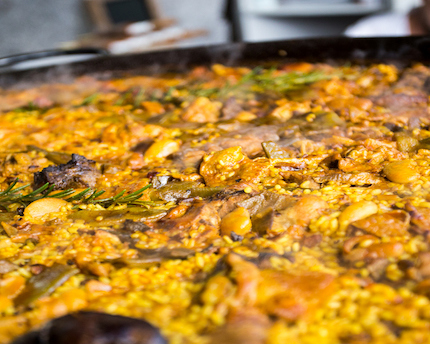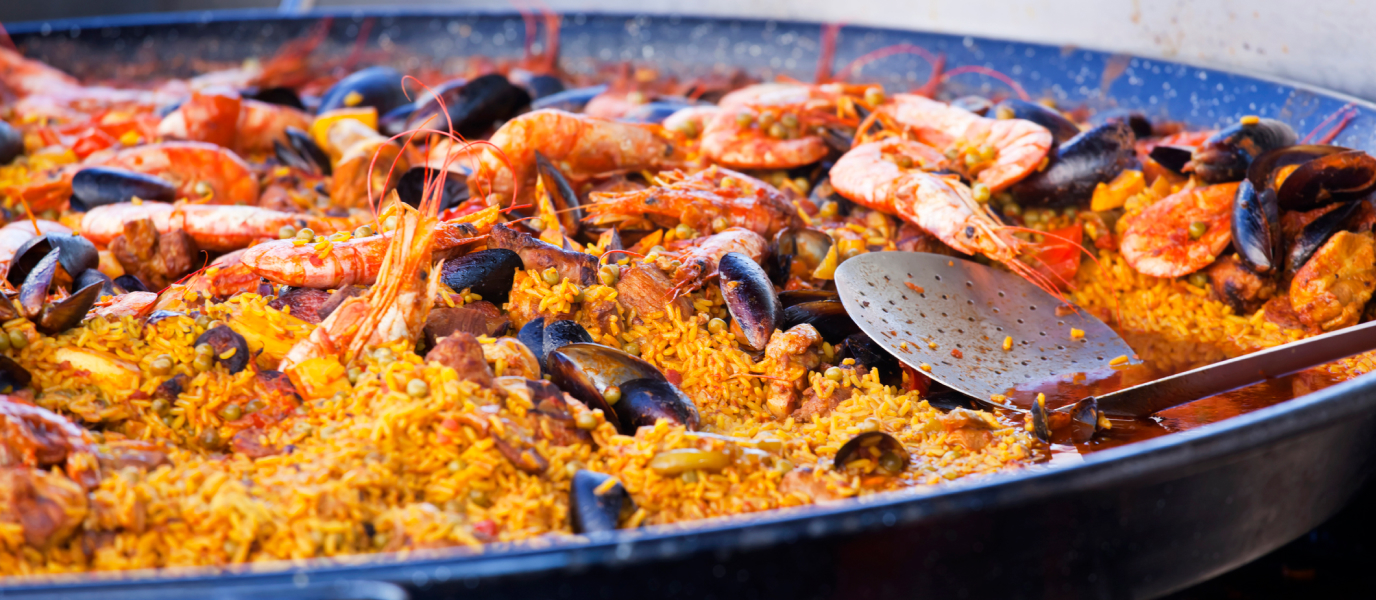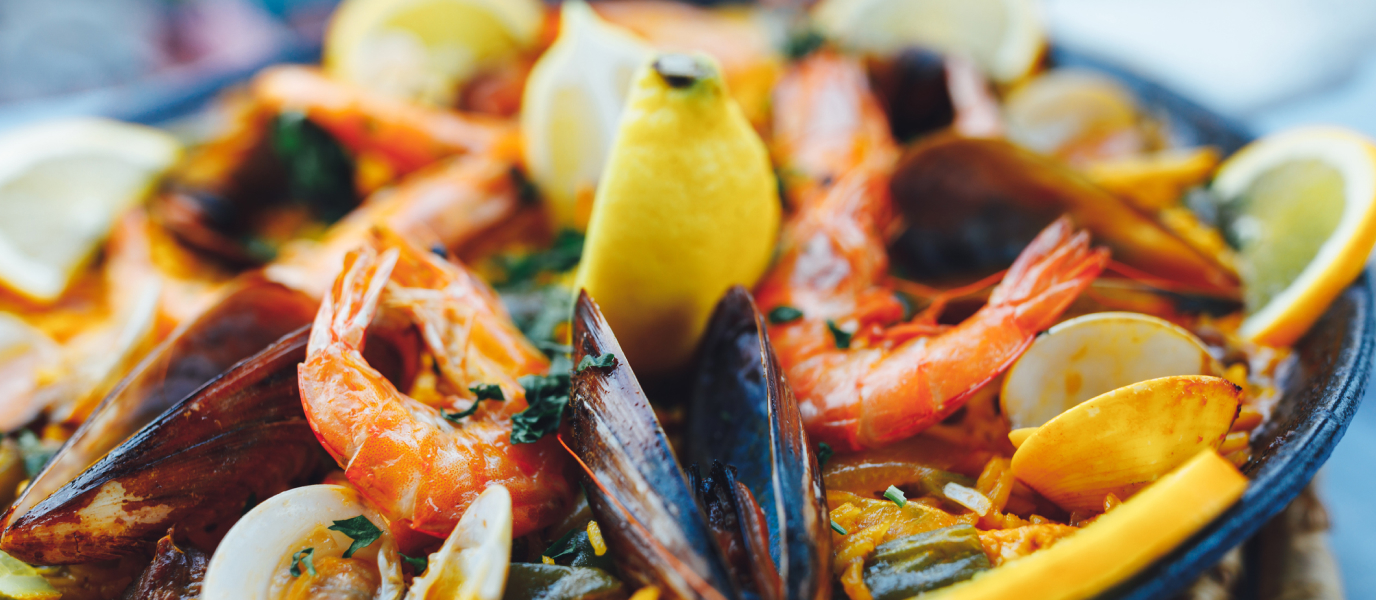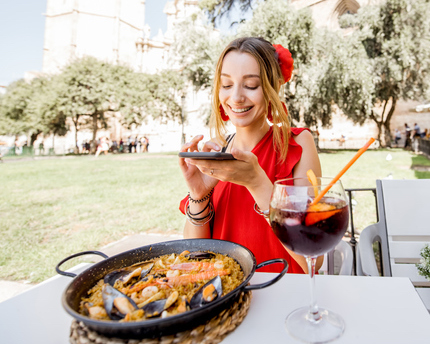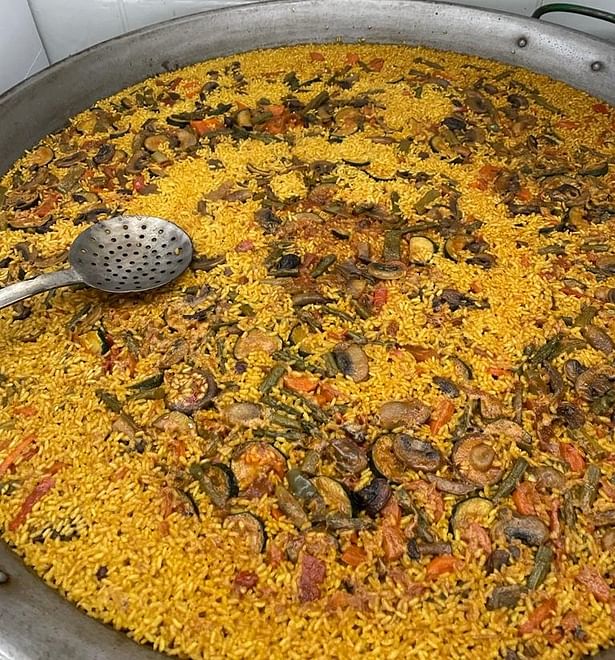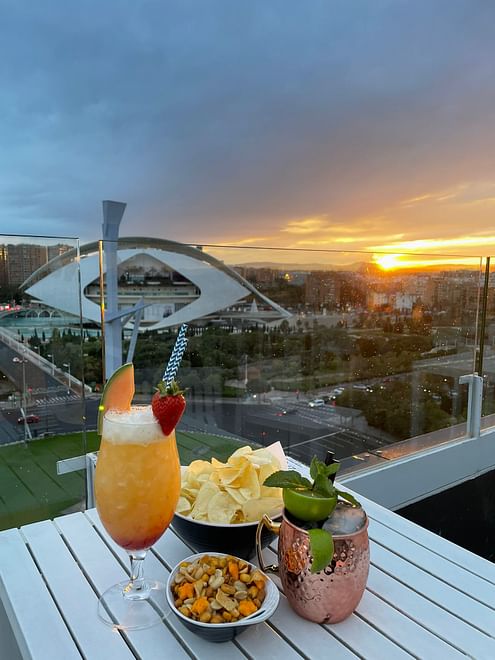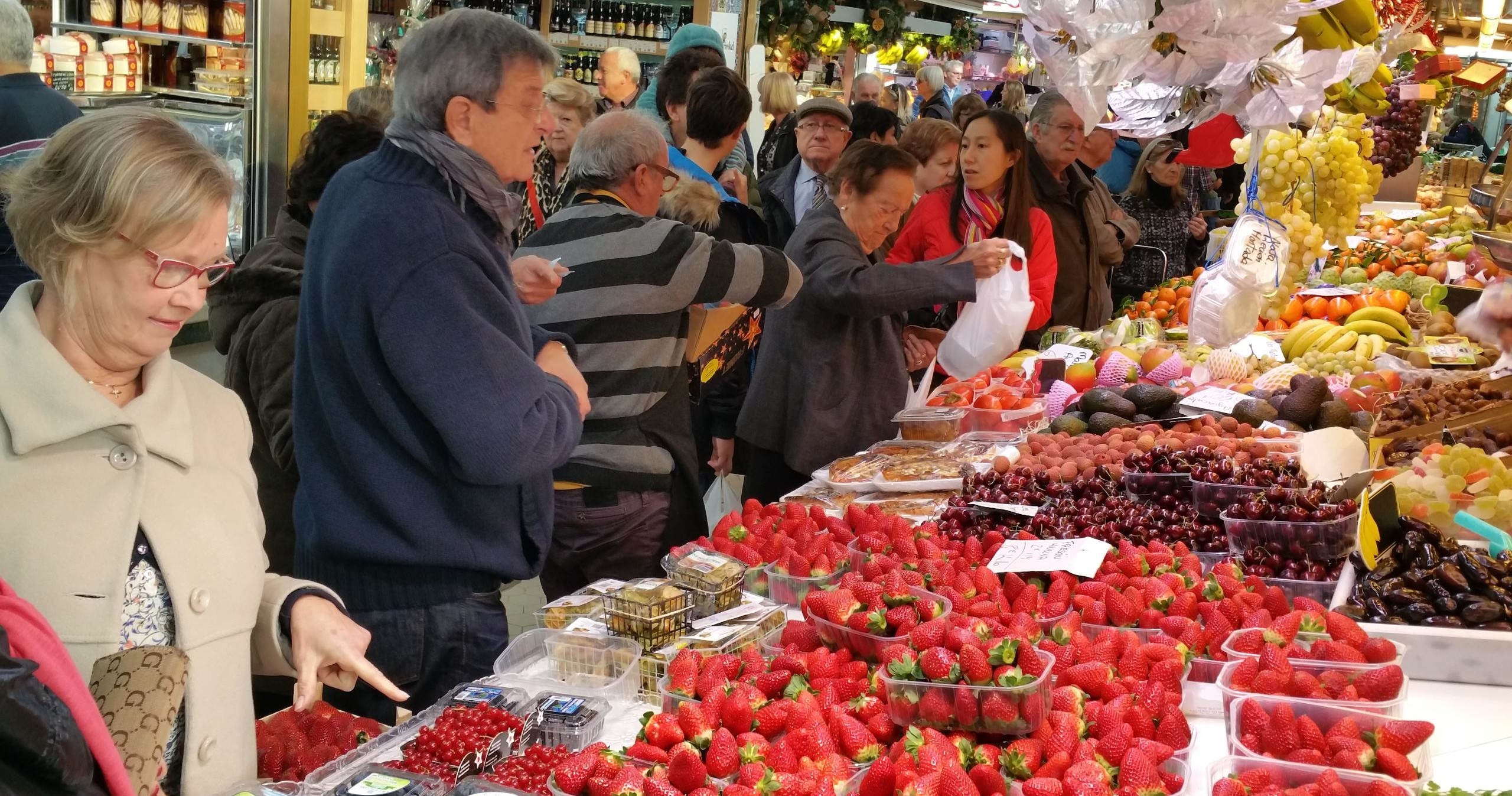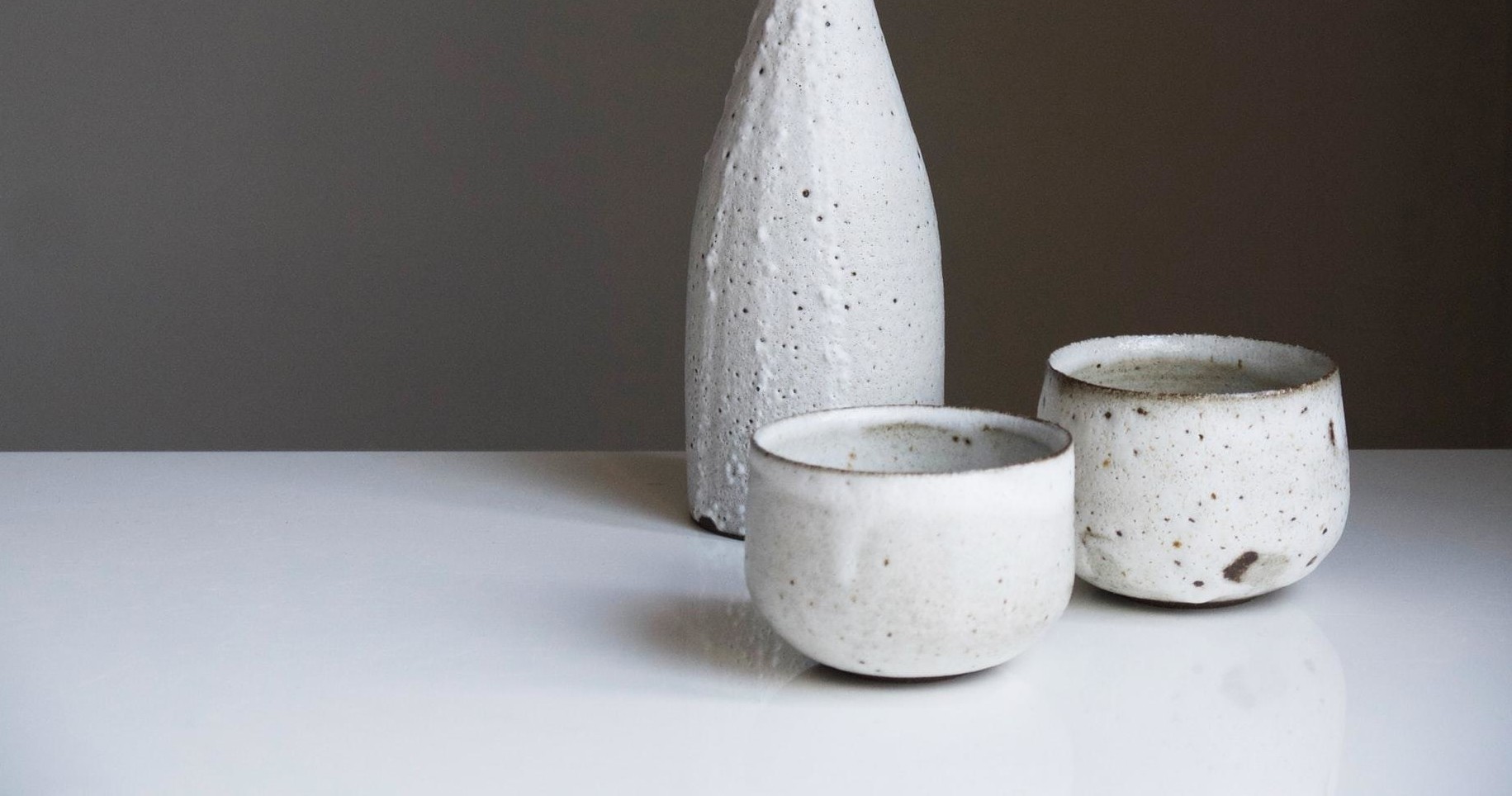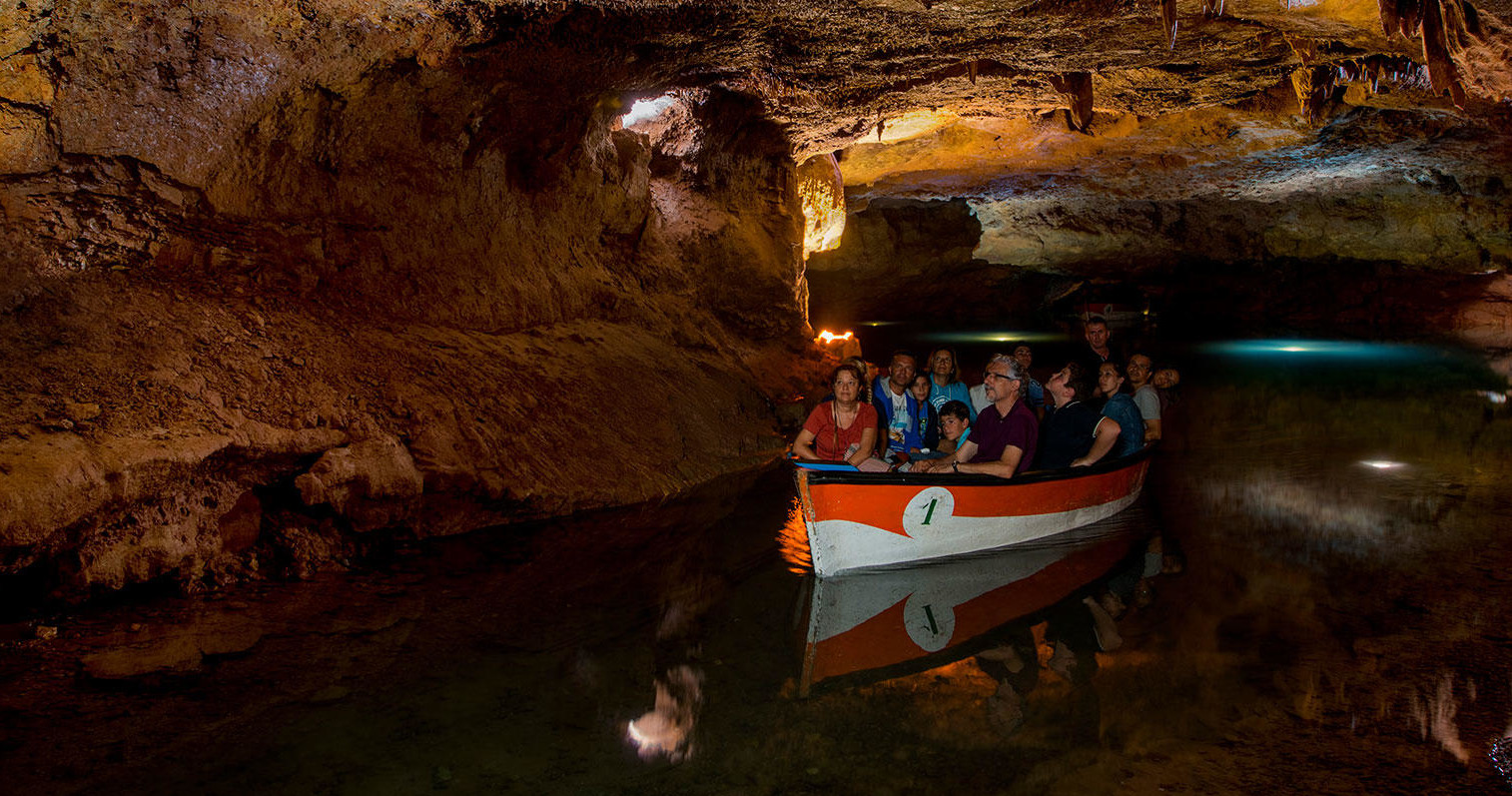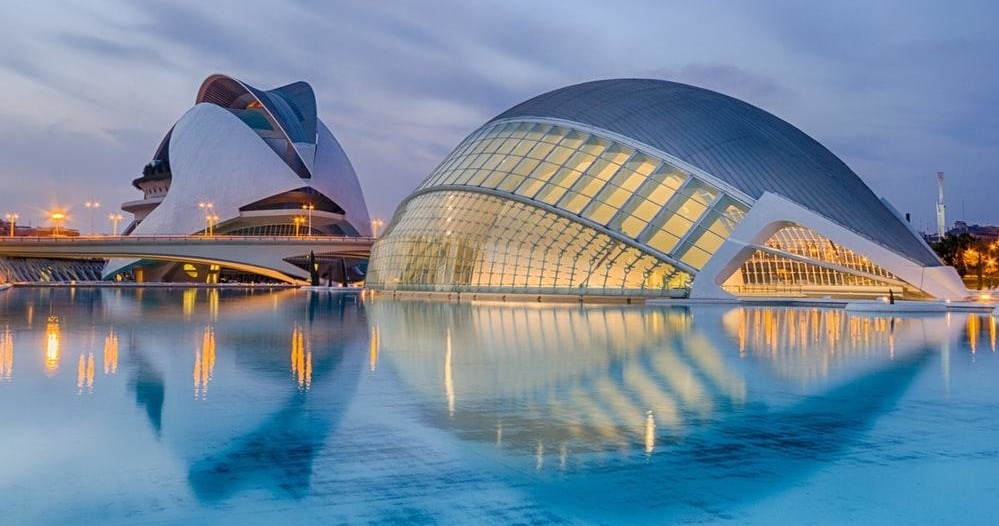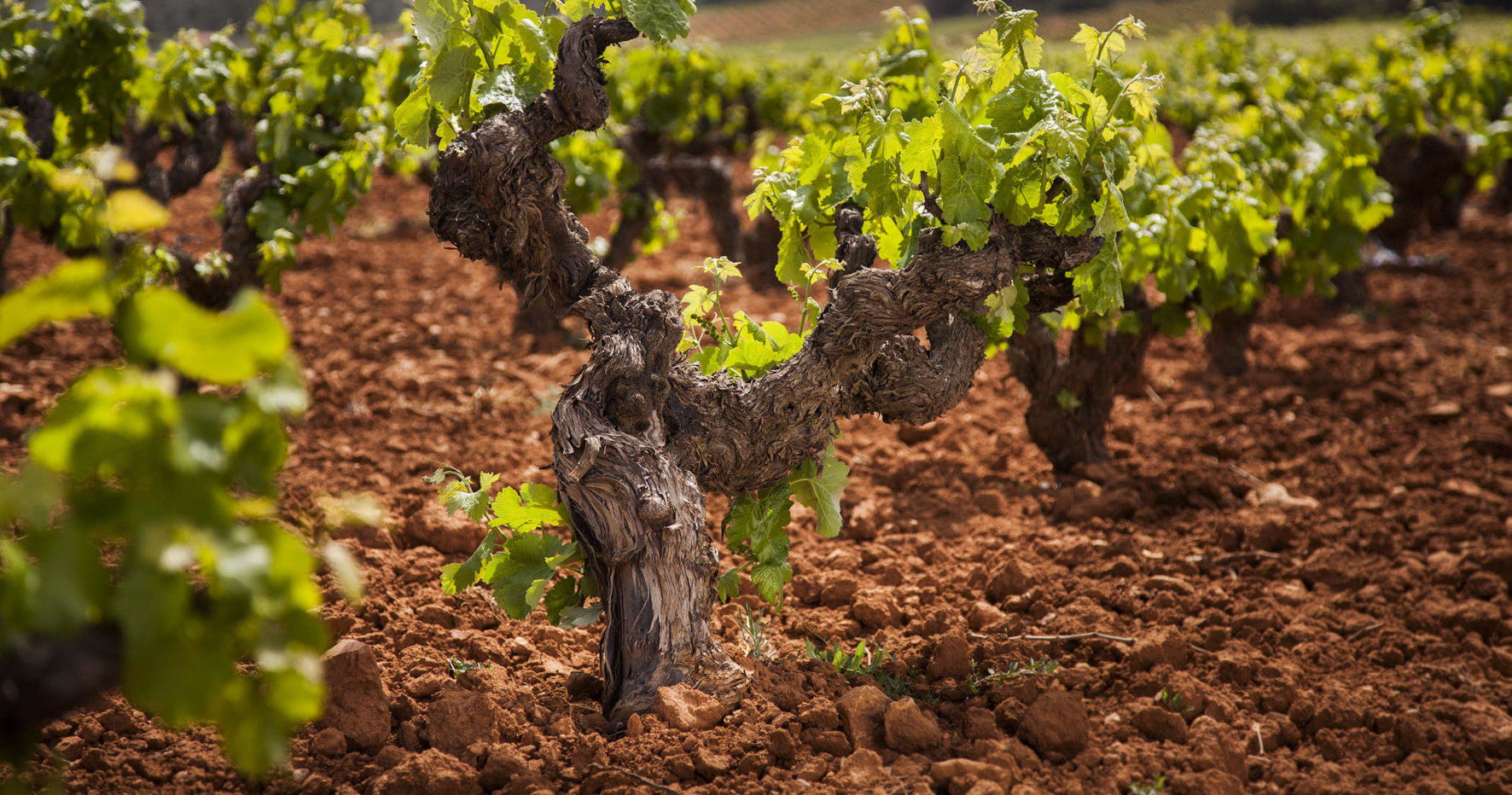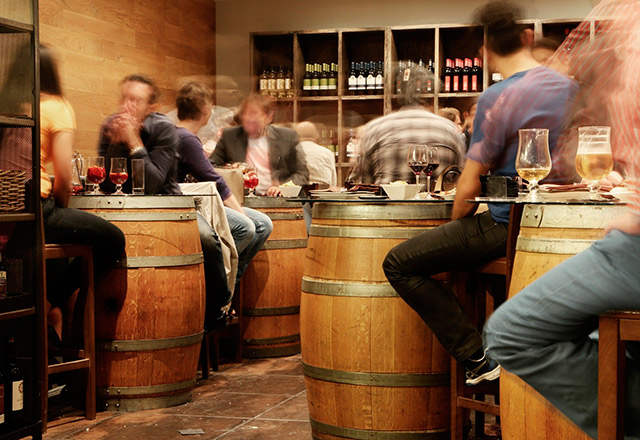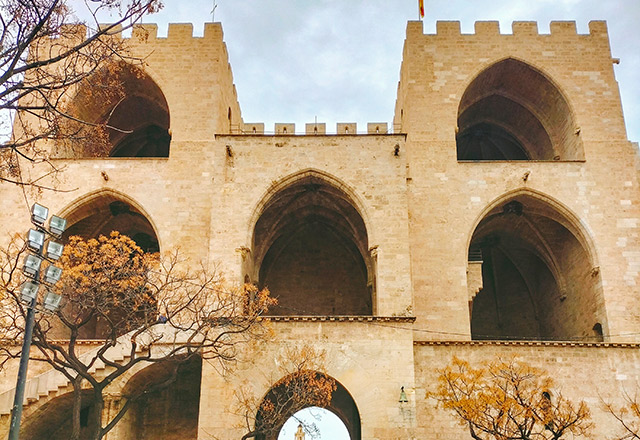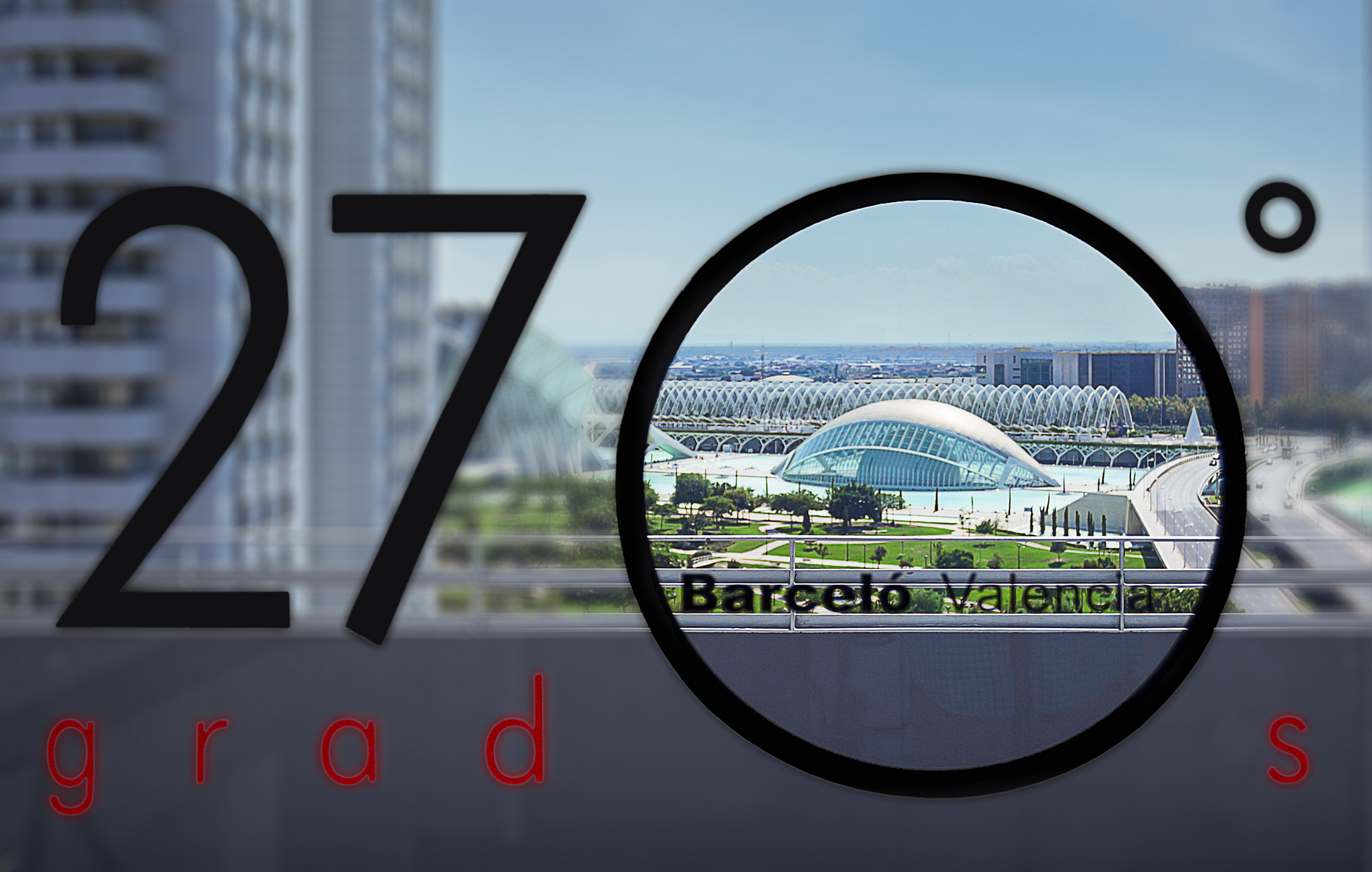Paella is inextricably bound up with Spanish cooking. In fact, it could be considered the true national dish. This is a dish (with rice as the main ingredient) that has its origins in the farmland around the city of Valencia, specifically in the area of the L’Albufera Natural Park.
Because paella is, above all, a food eaten by ordinary, country people. That said, through the passage of time and culinary experimentation, ingredients have been added to this quintessentially Valencian dish that have enhanced its texture and flavour. In particular, fish and shellfish, which have given rise to what is known as paella de marisco or seafood paella.
Many other rice dishes have been inspired by the sofrit [sauté] and the fumet (the stock in which seafood paellas are cooked) which form the basis of the traditional Valencian paella. And these are probably the two main factors that explain why these particular dishes are considered the true stars of Mediterranean cuisine.
The origins of paella. When and how it came about
The origins of Valencian paella are linked to the cultivation of rice in this area of the Mediterranean coast. Rice was even grown inside the city of Valencia itself. There are documents recording Valencians’ love of this cereal dating from the Early Middle Ages.
What is certain is that the first rice-based recipes to be written down are included in the Llibre de Coch (1520), where many of the basic recipes for the preparation of paella as we know it today are to be found. It was not until the nineteenth century however with the arrival of a large number of travellers that paella became famous, both nationally and internationally.
It is worth pointing out that paella is, essentially, a peasant dish, created by Valencian country dwellers using whatever ingredients were to hand. Paella therefore was originally an “inland dish”, which very quickly acquired a seafood version because of the rice-growing areas’ proximity to the Mediterranean Sea.
It is also worth noting that paella is a living dish, so that it has evolved over the centuries to become one of the star items on the menus of the majority of the city’s restaurants. Including the haute-cuisine establishments.
How paella is made
To make a paella, it is essential to have the correct cooking vessel. This is called a paella (not a paellera). It is a kind of frying pan: shallow, with a large surface area and two handles. Purists say that the best paella is one cooked over a wood fire, because of the uniformity and intensity of the heat generated. In the absence of a wood fire, the most important thing is to make sure that the bottom of the pan is evenly heated throughout the cooking period.
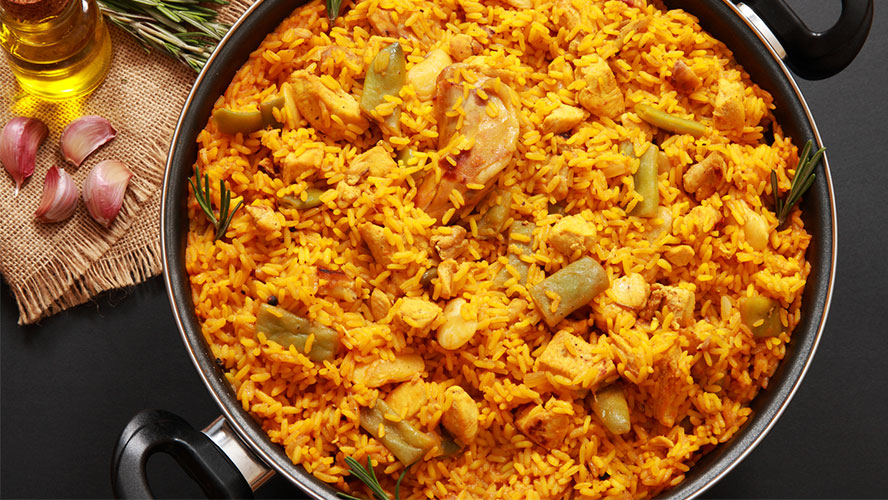
A good extra-virgin olive oil is essential for the sauté which is the basis of every paella. Along with good quality tomatoes and either garlic or onion, depending on the preference of the cook. Then, the rest of the ingredients are added gradually, each depending on the time it takes to cook. Next, the rice is added—which needs to be the bomba variety. And finally the cooking stock: in a proportion of 2:1 vis à vis the quantity of rice used.
These are the ingredients universally used to make a traditional paella:
- Rabbit and chicken: Cut into small pieces; it’s better if the diner doesn’t need to use a knife to cut the meat.
- Flat broad beans: Preferably those grown in Valencia.
- Butter beans: A vegetable similar to broad beans.
- Ground paprika: It must be the sweet variety—and the La Vera Designation of Origin variety is the best.
- Saffron: It is worth being generous with this prized condiment.
For seafood paella, other ingredients may be added such as:
- Squid
- Langoustines
- Monkfish
- Prawns: These are added towards the end of cooking, so that they retain their succulence.
- Mussels: Although their use is nowadays very widespread, they were not an ingredient of traditional paellas.
One element that definitely cannot be neglected in the preparation of a successful paella is the liquid used for the cooking stock. The water in Valencia, with its high proportion of calcium, combines perfectly with the bomba rice, as the latter has a high proportion of starch. The result is that rice cooked in this water has the grains separate, but not soft.
This means that the rice burns a little when it comes into direct contact with the cooking pan: this is the delicious socarrat [a paella’s crunchy crust], which many guests are ready to fight over.
Where to eat paella in Valencia
According to tradition, paella should be eaten with a wooden spoon from the pan in which it has been cooked. In this way, all the guests simultaneously share in the ritual and pleasure of this genuine gastronomic feast. Tradition and reality, however, are two very different things—although this is the usual way to eat paella in the home, it is certainly not the case in the majority of restaurants.
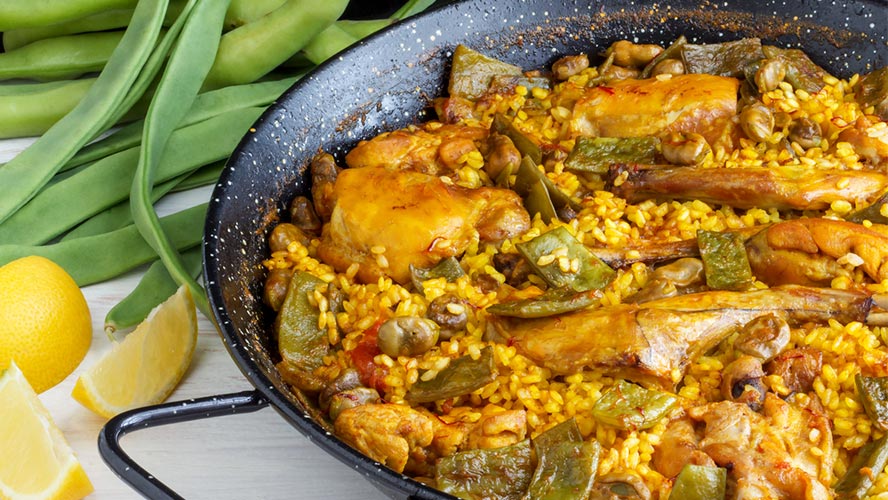
With or without the wooden spoon, one is still guaranteed to enjoy fantastic paellas on offer throughout Valencia. Among the best, most popular and well-known restaurants for this dish are:
- Cañas y Barro (Caudete, 9. El Palmar): The perfect restaurant for enjoying paella in its authentic rural context, as the establishment’s windows look out onto the rice fields of L’Albufera. Traditional paella in exceptionally generous servings.
- L’Alqueria del Pou (Entrada Rico, 6) claims to serve one of the most authentic paellas in Valencia. Located just 500 metres from the City of Arts and Sciences, it is also a good place to try traditional local cuisine. Advanced booking essential.
- El Racó de Luis (Bernia, 4): This is a good place to try genuine traditional Valencian paella as well as a few less well-known rice dishes. With an added, experimental dimension, as in the kitchen of this restaurant they are constantly researching the almost infinite potential of this particular cereal.
- Arrocería Duna (Platja del Saler): Also located close to the L’Albufera Natural Park. Here they serve a sophisticated paella, a concept far removed from that served in most of the beach bars around the coast.
- Mediterráneo (Travesía Pinedo al Mar, 8. Pinedo): A popular place, with an unpretentious décor and an informal atmosphere. But the paella is an unqualified success, true to tradition and using the very freshest ingredients.





























































